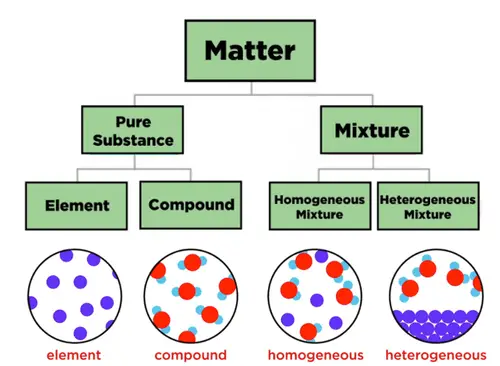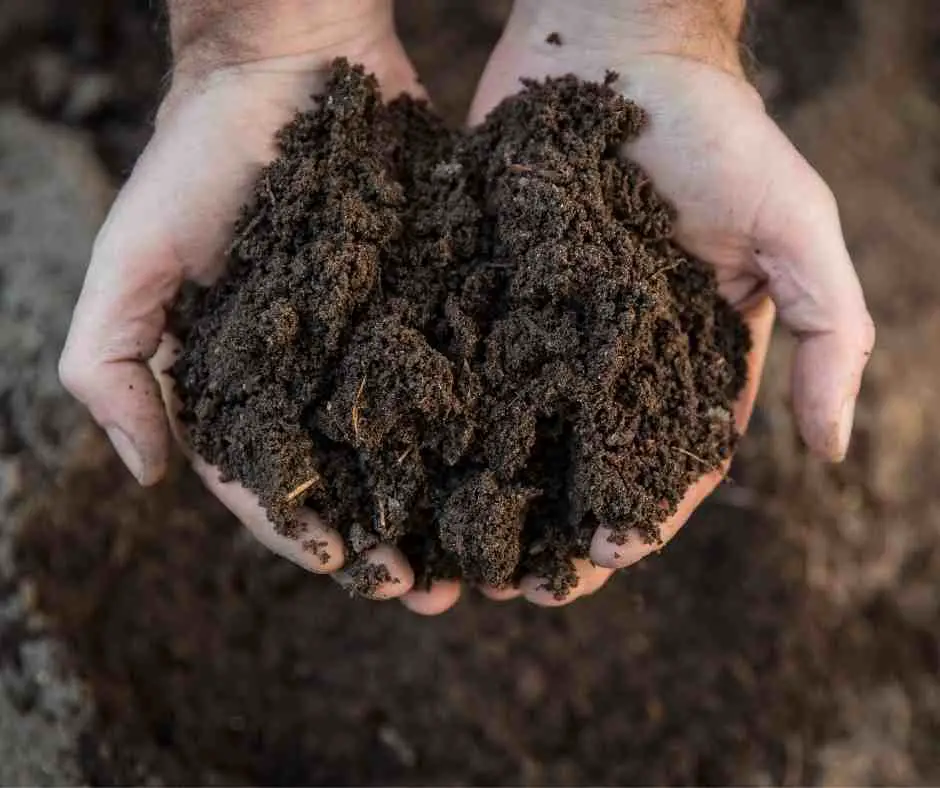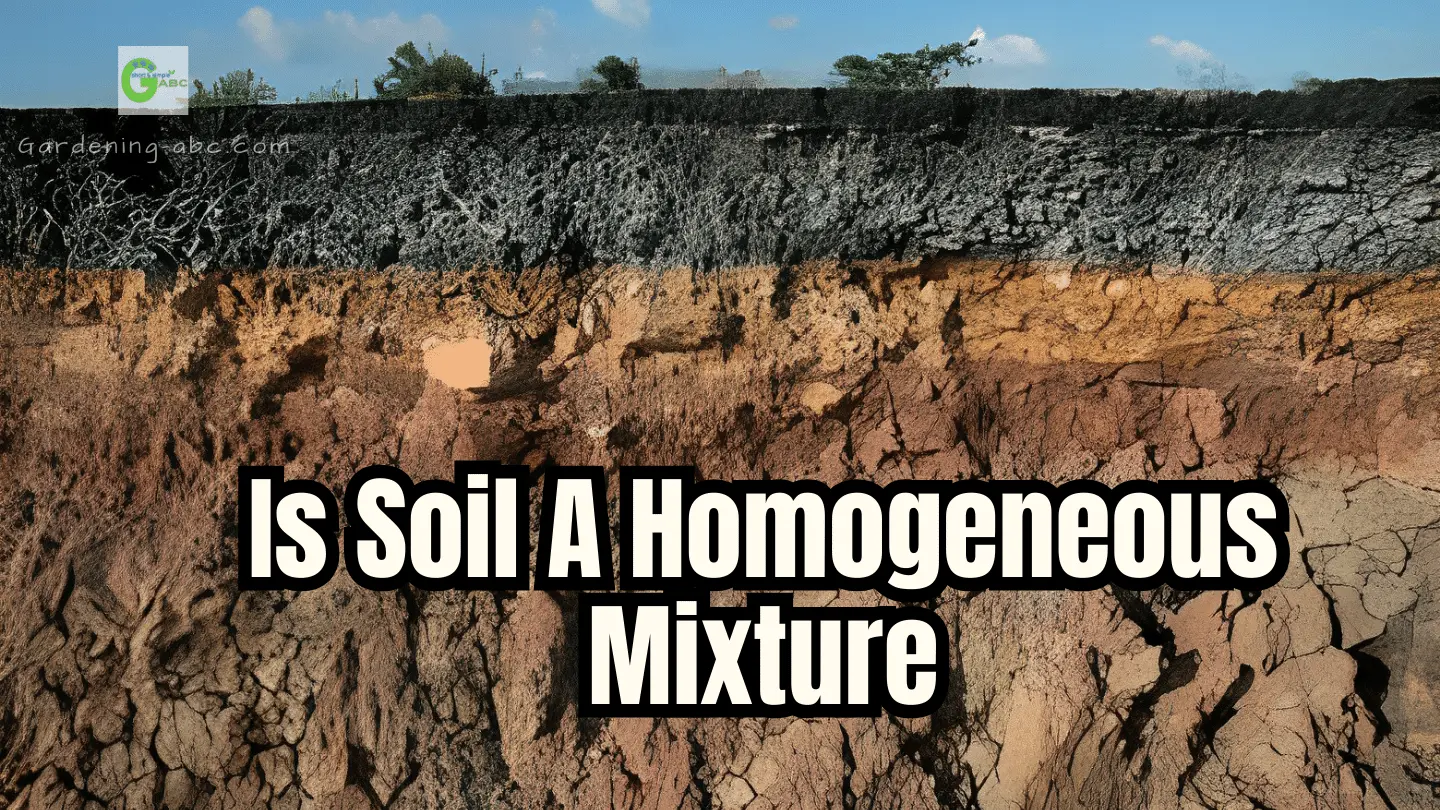We use affiliate links to run our site. When you buy through links on our site, we may earn an affiliate commission, without any added cost to you. Learn more
Soil is essential for sustaining life on Earth and is therefore an important topic of study. It consists of particles of different sizes, shapes, and colors that are held together by forces of attraction. These particles can be either living or nonliving.
Soil is often misunderstood as one single entity. It also gets confused between homogeneous and heterogeneous mixtures.
Most people think of dirt as containing only one type of soil particle. It actually contains many different types of particles, each contributing to the overall makeup of the soil. The size, shape, weight, and durability vary greatly among the different soil particles.
In this post, we are going to clear the doubts once in for all. First, we would discuss whether the soil is a mixture or a compound. And then we will also clear your doubts like is soil a heterogeneous mixture or a homogeneous mixture?
What is Soil?
Soil is a natural resource that is vital to our survival. It is the thin layer of organic matter that covers the Earth’s surface and is essential for plant growth. It is like the skin of the earth.
Soil provides the roots of plants with anchorage, water, and nutrients. It also moderates the temperature of the roots and helps to filter out pollutants.
The properties of soil vary depending on the type of parent material from which it formed, the climate, the organisms that live in it, and its history. But primarily, it is mostly made of minerals that have many different shapes. and are mixed with organic matter, water, air, and life forms.
Is Soil a Mixture or Compound?
When it comes to soil, there is much debate over whether it is a mixture or a compound. But before answering this question we have to first understand what is a compound and what is a mixture.
What Is A Compound:
In a compound, different elements are chemically combined together in a fixed ratio. One of the simple examples would be water (H2O).
A compound is always represented by a formula. Just like H2O in water. You can not easily separate their elements (like hydrogen and oxygen in the case of water) you have to go through a chemical process.

What Is A Mixture:
Mixtures on the other hand are a simple combination of two or more elements. Here there is no chemical bonding involved. So you can separate the elements relatively easily.
Salt in water or sand in water are two common examples of mixtures. You do not need any chemical reaction to separate salt from water or sand from water.
What Soil Is:

Now think about soil. Have you ever seen any chemical formula of the soil? No. Because soil is a mixture of different components and not a compound.
A compound by definition has a fixed composition. This means if the soil was a compound you would always get a fixed amount of minerals, organic matter, water, air, etc.
But the soil is not like this. It can be of many types with different compositions.
Now, mixtures can be of two types. Homogeneous and heterogeneous mixtures. Heterogeneous mixtures have visually distinguishable components, while homogeneous mixtures appear uniform throughout.
Homogeneous vs Heterogeneous Mixtures:
There are some basic fundamental differences between the two types of mixtures. See the table below.
| Homogeneous Mixture | Heterogeneous Mixture |
| 1. A Homogeneous mixture has a uniform composition. | Heterogeneous mixtures on the other hand don’t have a uniform composition. |
| 2. You can’t see the components through the naked eye. | Generally, you would be able to see the components of a heterogeneous mixture through the naked eye. |
| 3. You won’t be able to separate each component easily by physical methods. | You can easily separate the components by physical methods. |
| 4. A simple example of a homogeneous mixture would be Salt in water | Sand in water is a perfect example of a heterogeneous mixture. |
Now let’s see where soil fits in.
Is Soil A Homogeneous Mixture?
A homogeneous mixture is a uniform mixture. Here each particle is of uniform size, and there should be no irregularity.
Many of us think that soil is a simple mixture where the ingredients are equal and uniformly distributed. However, they aren’t. Not quite.
The word ‘soil’ is defined as the part of Earth in which all living things grow. But in reality, it is not that simple.
The particles of soil are not the same in every region of the world. Nor do they follow the same combination. Even the color varies to some extent.
This tells us that soil cannot be termed a homogeneous mixture.
Is Soil A Heterogeneous Mixture?
The thing that makes soil so fascinating is that it’s a mixture of a wide variety of individual components.
Soil is a heterogeneous mixture. A heterogeneous mixture is a mixture that has differing components.
Soil is a heterogeneous mixture because its constituents have different physical and chemical properties, they are not uniform. You can confirm that by doing a soil test for different soils.
What Soil Is Made Up Of:
Soil is essential for life on Earth. It forms when rocks and minerals are broken down by weathering and decomposition.
We have discussed it in detail in our earlier post but in short, the soil is made up of 5 different components
- Minerals,
- Organic matter,
- Air,
- Water, and
- Microorganisms.
Soil quality can vary greatly within one area. It may be poor, good, very good, or excellent depending on the area you are in. There are no set qualities of soil that indicate any level of quality.
The amount of sand, silt, and clay content, nutrient levels, pH levels, and salinity are all factors that determine soil quality.
How This Can Impact You As A Gardener:
The effects of Soil Heterogeneity on Plants can be quite significant and diverse:
- Plants might grow better in some places and not so much in others because the soil isn’t the same everywhere. Some areas might have more of the stuff plants need to grow, while other spots might not have as much.
- Water behaves differently in different soils. Some places might hold onto water better, while others might let it go quickly. This affects how much water plants in those areas can use.
- There are lots of tiny living things in the soil, and they like different conditions. So, in different soils, you’ll find different types of these tiny living things, which affect how nutrients move around and how the soil stays healthy.
- Because of these differences, some soil might be stronger and not wash away easily, while other soil might get eroded more easily.
- For farming, it can be tricky because different soils need different care. This affects how well crops grow and how much farmers can produce.
- Also, when soil is different in different places, it creates different homes for different plants and animals, affecting the variety of life in an area.
Understanding these differences helps us figure out how to use the land well, grow things better, and take care of nature.
The Final Verdict:
Soil is a heterogeneous mixture because it is composed of different particles that are not evenly distributed. The particles in soil vary in size, shape, and composition. Soil is not a homogeneous mixture, and it is certainly not a compound.
So now that you know that soil is a heterogeneous mixture it’s time you learn more about the 4 different types of soil that are prevalent in the garden. By knowing the type and its pros and cons you can use the soil to your benefit.
I hope this post was helpful to you. If you like the post please share it with others also.
Amazon and the Amazon logo are trademarks of Amazon.com, Inc, or its affiliates.

Hi there! My name is Prasenjit and I’m an avid gardener and someone who has grown a passion for growing plants. From my hands-on experience, I have learned what works and what doesn’t. Here I share everything I have learned.
